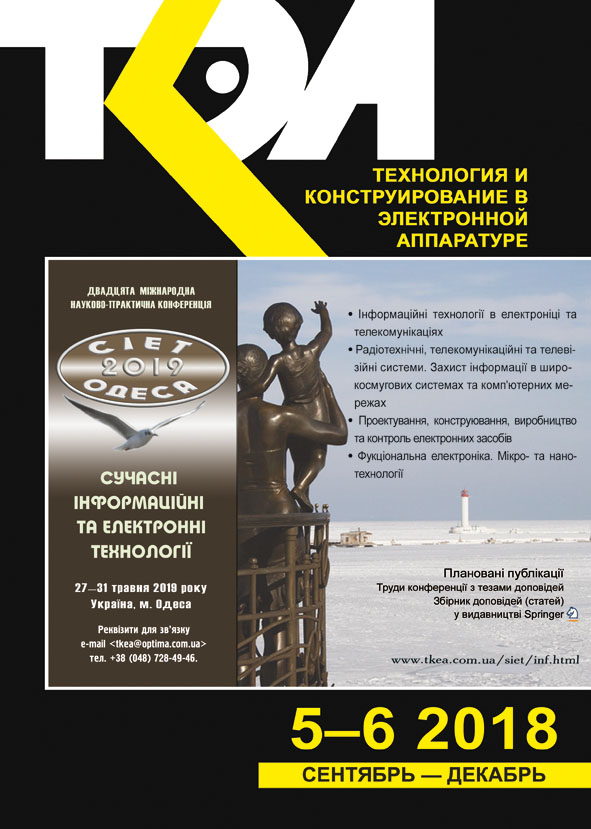CFD-simulation of impact jet radiator for thermal testing of microprocessors
Abstract
One of the final stages of microprocessor development is thermal testing. This procedure is performed on a special stand, the main element of which is a switching PCB with mounted microprocessor sockets, chipsets, interfaces, jumpers and other components which provide various modes of microprocessor operation. Changing the case temperature of the microprocessor is carried out typically using a thermoelectric module. The cold surface of the module with controlled temperature is in direct thermal contact with the microprocessor housing designed for cooler installation. On the hot surface of the module, the radiator is mounted which dissipates the total heat flux from the microprocessor and the module. High density PCB layout, the requirement of free access to the jumpers and interfaces, and the presence of numerous sensors restrict the space for radiator mounting and require the use of an extremely compact radiator, especially in air cooling conditions. One of possible solutions for this problem may be to reduce the area of the heat-transfer surfaces of the radiator due to a sharp growth of the heat transfer coefficient without increasing the air flow rate. A sharp growth of heat transfer coefficient of the radiator can be achieved by making several conic or combined conic-cylindrical dead-end cavities with extra finning in the heat-transfer surface. Such cavities should absorb the impact air jets. In this study, CFD simulation of such radiators has been conducted. It is determined that when the air velocity at the nozzle entrances is 50–100 m/s, the investigated designs of impact-jet radiators have a thermal resistance in the range of 0.5–2.2°C/W. This is quite sufficient for the thermal testing of some types of microprocessors with setting a number of operational modes and performing of certain types of test computations. It is shown that the use of combined dead-end cavities with extra finning is the best of the considered solutions and allows for a sharp (up to 44%) intensification of heat transfer in the radiator in comparison with cylindrical dead-end cavities, but at a cost - the loss of air pressure increases up to 20%. As a result of the study, it was found that the impact-jet radiator with dead-end tapering cone shaped cavities and combined cone-cylinder shaped cavities with extra finning, can successfully solve the problem of heat removal from microprocessors during thermal testing. However, it should be noted, that such radiators have a high aerodynamic resistance and require a high pressure air source for operation.
References
Pooya Tadayon. Thermal challenges duringmicroproce ssor. Intel Technology Journal Q3, 2000, pp. 1–8. https://www.intel.com/content/dam/www/public/us/en/documents/research/2000-vol04-iss-3-intel-technology-journal.pdf (05.11.2018)
Spokoiny M., Trofimov V. Collider jets cooling method of microprocessors. Proc. 2011 International Microelectronics and Packaging Society ATW on Thermal Management, Session 12 “Liquid, phase-change and refrigeration cooling”. Palo Alto, CA, USA, 2011, pp. 1–18.
Khaled Teffah, Youtong Zhang, Xiao-long Mou. Modeling and experimentation of new thermoelectric cooler–thermoelectric generator module. Energies, 2018, vol. 11, no. 576, pp. 1–11. http://dx.doi.org/10.3390/en11030576
Spokoiny M., Trofimov V., Qiu Х., Kerner J.M. Enhanced heat transfer in a channel with combined structure of pins and dimples. Proc. 9th AIAA/ASME Joint Thermophysics and Heat Transfer Conference, San Francisco, CA, 2006, pp. 1–21.
Ayla Dogan, Oguzhan Ozbalci. Experimental investigation of the effect of metal foam material on CPU cooling. Journal of Engineering Technology and Applied Sciences, 2017, vol. 2, no. 3, pp. 113–120.
Bulavin L.A., Aktan O.Yu., Nikolaienko T.Yu., Nikolaienko Yu.E. Experimental examination of a temperature field of a heat sink cooler. Tekhnologiya i Konstruirovanie v Elektronnoi Apparature, 2006, no. 5, pp. 61–64. (Rus)
Pismenniy E. N., Rogachev V. A., Baranjuk A. V., Tcvyachenko E. V. Thermal efficiency of with platecut fins in conditions low speed to blow. Tekhnologiya i Konstruirovanie v Elektronnoi Apparature, 2005, no. 4, pp. 43–45. (Rus)
Rassamakin B. M., Rogachev V. A., Khayrnasov S. M. Coolers based on heat pipes for thermally loaded devices of personal computers. Tekhnologiya i Konstruirovanie v Elektronnoi Apparature, 2006, no. 4, pp. 48–50. (Rus)
Yudaev V.N., Mikhailov M.S., Savin V.K. Heat transfer when jets interact with barriers. Moskow, Mashinostroenie, 1977, 247 p. (Rus)
Luhar S., Sarkar D., Jain A. Steady state and transient analytical modeling of non-uniform convective cooling of a microprocessor chip due to jet impinement. International Journal of Heat and Mass Transfer, 2017, vol. 110, pp. 768–777. http://dx.doi.org/10.1016/j.ijheatmasstransfer. 2017.03.064
Spokoiny Yu.Ye., Trofimov V.E., Оlibash G.V. Choosing design parameters for radiators for jet impact cooling of large integrated circuits. Tekhnologiya i Konstruirovanie v Elektronnoi Apparature, 1998, no. 1, pp. 18–19. (Rus)
Spokoiny Yu.Ye., Trofimov V.E., Оlibash G.V. Designing jet air cooled radiators for IS. Tekhnologiya i Konstruirovanie v Elektronnoi Apparature, 1998, no. 2, pp. 17–19. (Rus)
Trofimov V.Е., Pavlov A.L., Mokrousova E.A. CFD-simulation of radiator for air cooling of microprocessors in a limitided space. Tekhnologiya i Konstruirovanie v Elektronnoi Apparature. 2016, no. 6, pp. 30–35. http://dx.doi.org/10.15222/TKEA2016.6.30 (Rus)
Thomas Duda.L., Venkat Raghavan. 3D metal printing technology. IFAC-PapersOnLine, 2016, vol. 49, iss. 29, pp. 103–110. https://doi.org/10.1016/j.ifacol.2016.11.111
Anton du Plessis, Stephan Gerhard le Roux, Francis Steyn. Quality investigation of 3D printer filament using laboratory X-ray tomography. 3D Printing and Additive Manufacturing, 2016, vol. 3, no. 4, pp. 1–6. https://doi. org/10.1089/3dp.2016.0011
Trofimov V.Е., Pavlov A.L. Jet air cooled radiator. Proc.11th Int. sc.-pract. conf. «Modern Information and Electronic Technologies», vol. ІІ, Ukraine, Odesa, 2010, p. 22. (Rus)
Copyright (c) 2018 Трофімов В. Є., Павлов О. Л., Сторожук О. С.

This work is licensed under a Creative Commons Attribution 4.0 International License.

